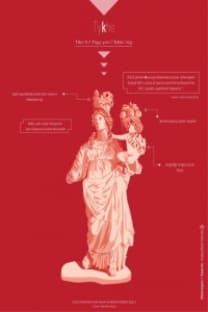İNSAN SONRASI SÖYLEMDE SANATIN MANASI
insan olmayan, doğa, sanat, mana, yüzey
The Meaning of Art in Posthuman Discourse
___
- Cresswell, T. (1997). Weeds, plagues, and bodily secretions: A geographical interpretation of metaphors of displacement. Annals of the Association of American Geographers 87(2), 330–345. https://doi.org/10.1111/0004-5608.872056
- de Boisdeffre, P. ve Levi-Strauss. (1971). Yalnızca insan değil, yaşayan tüm varlıklar saygıyı hak eder. (İ. Kocael Çev.). Erişim tarihi: 27 Ocak 2021. https://www.youtube.com/watch?v=-8CqwQXCWoE&t=7s.
- Gordon, D. (2010, Kasım 17). Douglas Gordon, on working with elephants. https://www.sfmoma.org/artist/douglas_gordon/. [Erişim Tarihi: 23 Ekim 2020].
- Gordon, D. (2003). Play death, real time. [Video yerleştirme]. Erişim tarihi: 18 Ekim2020. https://gagosian.com/exhibitions/2003/douglas-gordon-play-dead-real-time/
- Groys, B. (2014). Sanatın gücü. Hayalperest Kitap.
- Haraway, D. (1991). Simians, cyborgs, and women:the reinvention of nature. Routledge.
- Harman, G. (2017). Nesne yönelimli ontoloji. (1. Baskı). Tellekt Yayınları.
- Holmes, O. W. (1859, Haziran). The stereoscope and the stereograph. The atlantic. Erişim Tarihi: 12 Mart 2021. https://www.theatlantic.com/magazine/archive/1859/06/the-stereoscope-and-the-stereograph/303361
- Hüner, E. (2012). İsimsiz [Dijital Baskı]. http://www.emrehuner.com/site-2014/untitled-2.htm
- Hüner, E. (2013). Emre Hüner Aeolian sergi kataloğu. (N. Esirtgen collection). Mart Matbaacılık Sistemleri.
- Latour, B. (2004). Politics of nature. Harvard University Press.
- Leppert, Richard. (2017). Sanatta anlamın görüntüsü. Ayrıntı Yayınları.
- Lévi-Strauss, C. (2016). Yaban düşünce. Yapı Kredi Yayınları, 7. Baskı.
- Lévi-Strauss, C. (1987). Introduction to the work of Marcel Mauss. Routledge.
- Mauss, M. (1902). A general theory of magic. Routledge Classics.
- Opperman, S. (2018). Ecomaterialism. M. Hlavajova ve R. Braidotti (Ed.), Posthuman glossary içinde (120-123). Bloomsbury Publishing.
- Opperman, S. (2018). From ecological postmodernism to material ecocriticism: creative materiality and material agency. S. Iovino ve S. Oppermann (Ed.). Material ecocriticism içinde (21-36). Indiana University Press.
- Sebeok, T. (1988). “Animal” in biological and semiotic perspective. T. Ingold (Ed.). What is an animal? içinde (63-73). Routledge.
- Starling, S. (1999). Rescued rhododendrons [C Print]. Erişim tarihi: 19 Ekim 2020. https://www.artimage.org.uk/18442/simon-starling/rescued-rhododendrons--1999-[]
- Starling, S. (2002). Kakteenhaus [Yerleştirme]. https://www.artimage.org.uk/18369/simon-starling/kakteenhaus--2002- [Erişim Tarihi: 19 Ekim 2020]
- Yücel, H. (2019). İnsanlar ölür olaylar ölmez: Deleuze’ün öznesiz etiği. Cogito, 95-96. Yapı Kredi Yayınları.
- Yücel, T. (2016). Claude Lévi-Strauss ve yaban düşünce. C. Lévi Strauss. (T. Yücel Çev.) Yaban Düşünce içinde. Yapı Kredi Yayınları.
- Başlangıç: 2016
- Yayıncı: Düzce Üniversitesi
RESİMDE MELANKOLİK İMGENİN DUYGULAR TARİHİ AÇISINDAN İNCELENMESİ
DEĞER PROBLEMİ OLARAK ÇİRKİN VE RESİM SANATINDA ÇİRKİNLİK TEMSİLİ
HEYKEL DÖKÜMÜNDE MUM YOK ETME TEKNİĞİ’NE GELENEKSEL ve SAYISAL YAKLAŞIMLAR
ANTİK ÇAĞ'DA MUTFAK KÜLTÜRÜNDE TOPRAK KAPLAR VE ÖNEMİ
Firdevs Müjde GÖKBEL, Hakkı ÇILGINOĞLU
CUMHURİYET DÖNEMİ MÜZİK POLİTİKALARI ÜZERİNE BİR İNCELEME
TEKSTİLDE HİDROKROMİK BASKI TASARIMI
YAZININ GÖRSEL İMGEYE DÖNÜŞÜM SÜRECİNDE SANAT
CEMAL SÜREYA POETİKASINDA PALİMPSESTİK EKFRASİS
İNSAN SONRASI SÖYLEMDE SANATIN MANASI
Harika Esra OSKAY, Funda SUSAMOĞLU
KAMUSAL ALANDA VİDEO SANATI ÖRNEKLERİ BAĞLAMINDA DOUG AITKEN VE ESERLERİ
